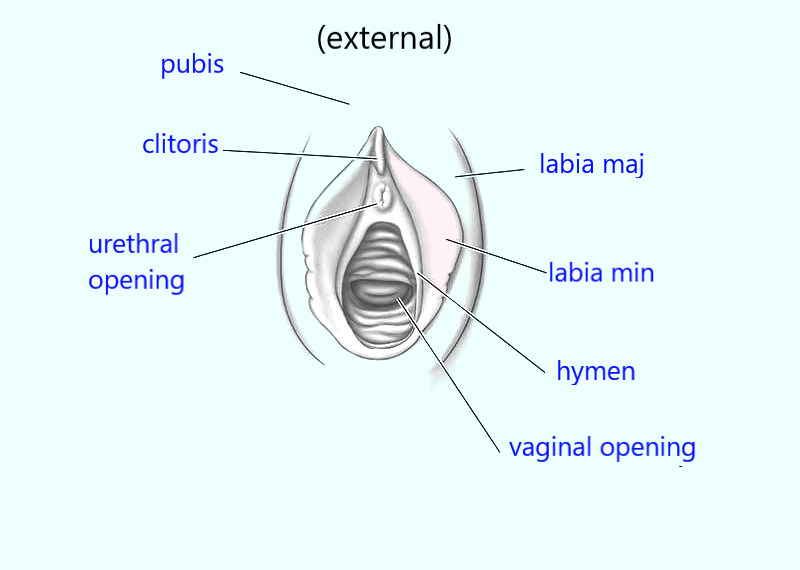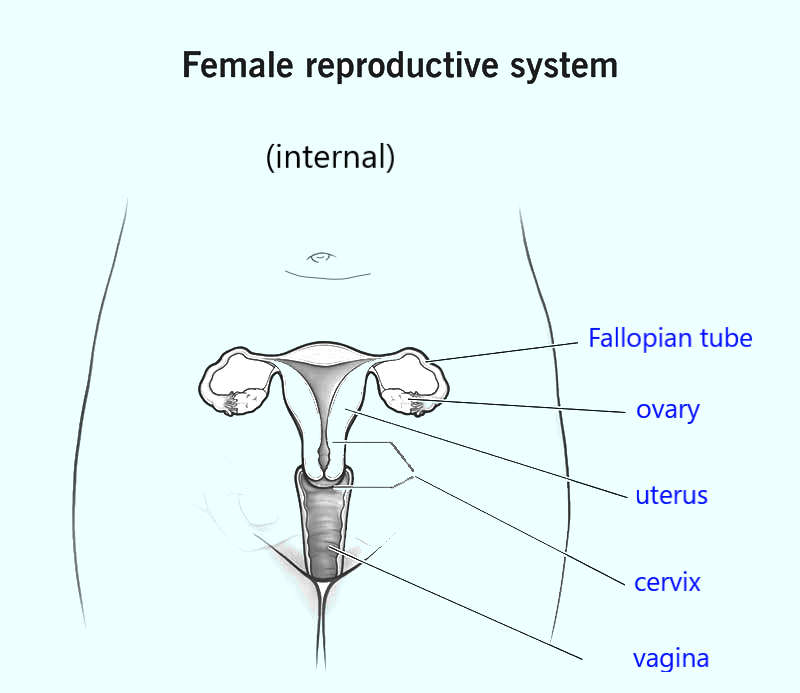Female Reproductive System
Female reproductive system meaning
The female reproductive system refers to the complex set of internal and external organs in females that are responsible for reproduction, sexual activity, and the regulation of hormonal functions related to these processes. This system plays a crucial role in fertility, menstruation, and childbirth.
Components of the Female Reproductive System
External Organs:
The external parts of the female reproductive system are collectively known as the vulva. Key components include:
- Pubis: The fatty tissue covering the pubic bone.
- Labia Maj. and Labia Min.: Folds of skin that protect the vaginal opening.
- Clitoris: A small organ rich in nerve endings, playing a significant role in sexual arousal.
- Vaginal Opening: The entrance to the vagina.

Internal Organs:
The internal structures include:
- Vagina: A muscular canal that connects the external genitals to the uterus; it serves multiple functions including as a birth canal during delivery.
- Cervix: The lower part of the uterus that opens into the vagina; it allows menstrual fluid to exit and sperm to enter.
- Uterus (Womb): A hollow, muscular organ where a fertilized egg can implant and develop into a fetus during pregnancy.
- Fallopian Tubes: Two tubes that connect each ovary to the uterus; they are typically where fertilization occurs when an egg meets sperm.
- Ovaries: Two glands located on either side of the uterus that produce eggs (ova) and hormones such as estrogen and progesterone.

Functions of the Female Reproductive System
The female reproductive system is a complex and vital biological system with several key functions, primarily centered around reproduction and the production of female sex hormones [.
The main functions of the female reproductive system include:
Reproduction and Fertility
The primary role of the female reproductive system is to facilitate reproduction. This involves the production of female gametes, known as ova or egg cells, and providing an environment for their fertilization and subsequent development.
Egg Production (Oogenesis):
The ovaries, small oval-shaped glands located on either side of the uterus, are responsible for producing and storing eggs. Females are born with all the eggs they will ever produce, with approximately 1 to 2 million at birth, declining to about 300,000 by puberty . During the reproductive years, typically one egg matures and is released from an ovary each month through a process called ovulation.
Fertilization:
After ovulation, the egg travels through the fallopian tubes, which connect the ovaries to the uterus . Fertilization, the union of an egg and sperm, normally occurs within the fallopian tubes . The fallopian tubes are equipped with finger-like projections called fimbriae that capture the released egg and cilia that help move it towards the uterus.
Implantation and Gestation:
If fertilization occurs, the fertilized egg (now a zygote) travels to the uterus, a hollow, pear-shaped organ . The uterus has a specialized lining called the endometrium, which thickens in preparation for a potential pregnancy . The fertilized egg implants into this thickened lining, marking the beginning of pregnancy . The uterus then nourishes and supports the developing embryo and fetus throughout gestation .
Childbirth:
At the end of pregnancy, the uterus undergoes strong muscular contractions during labor to push the fetus and placenta out of the body . The cervix, the lower part of the uterus, dilates to allow the baby to pass through into the vagina, also known as the birth canal.
Hormone Production
The female reproductive system is a major endocrine system, producing crucial hormones that regulate various bodily functions, particularly those related to reproduction.
Estrogen:
Produced primarily by the ovaries, estrogen plays a vital role in the development of female secondary sexual characteristics, regulates the menstrual cycle, and contributes to the health of bones, heart, and other tissues.
Progesterone:
Also produced by the ovaries, especially by the corpus luteum after ovulation, progesterone is essential for preparing the uterus for pregnancy and maintaining it if conception occurs. It also helps regulate the menstrual cycle.
Other Hormones:
Other hormones like Follicle-Stimulating Hormone (FSH) and Luteinizing Hormone (LH), released from the brain, regulate the growth and maturation of eggs and the production of estrogen and progesterone.
Menstruation
When fertilization and implantation do not occur, the female reproductive system undergoes menstruation, a cyclical process of shedding the uterine lining.
Menstrual Cycle:
The average menstrual cycle lasts about 28 days and involves phases such as the follicular phase (egg development), ovulatory phase (egg release), and luteal phase (hormone levels decrease if no implantation).
Shedding of Uterine Lining: If the egg is not fertilized, the thickened uterine lining, which was prepared for pregnancy, breaks down and is shed from the body through the vagina as menstrual blood. This periodic shedding is commonly referred to as a “period”.
Sexual Activity
The external female reproductive organs, collectively known as the vulva, are designed to protect the internal organs from infection and facilitate sexual intercourse.
External Genitals:
The labia majora and minora protect the vaginal and urethral openings.The clitoris, a highly sensitive organ, is crucial for sexual stimulation and orgasm.
Vagina:
The vagina is a muscular canal that connects the cervix to the outside of the body, allowing for sexual intercourse and serving as the birth canal.
In summary, the female reproductive system’s main functions are producing eggs, facilitating fertilization, supporting pregnancy and childbirth, producing female sex hormones, and enabling sexual activity.